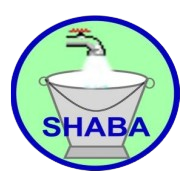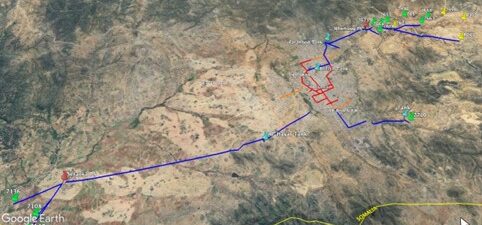Water Supply and Sanitation in Borame, Somaliland
Water Supply Sector
City Overview:
- Borame is the capital of the Awdal Region and one of Somaliland’s most populous towns, with an estimated population of 250,000.
- It receives higher rainfall (548 mm/year) compared to other towns in Somaliland, making it a vital area for water resource management.
Current Water Sources:
- Eastern Basin: Produces 6,300 m³/day but is heavily overexploited, leading to significant groundwater depletion.
- Western Basin (Afraaga): Supplies 1,500 m³/day, with plans to increase capacity to 3,000 m³/day by 2025.
Challenges:
- Overexploitation of the Eastern Basin aquifer, resulting in falling groundwater levels.
- Limited alternative water sources to meet the growing demand of Borame’s population.
- High dependency on unsustainable extraction rates.
Proposed Solutions:
- Development of Complementary Water Sources:
- Construction of the Amoud Dam.
- Utilization of Baki Basin spring water and groundwater resources.
- Exploration of the Nahdi Basin and transboundary cooperation for Western Basin groundwater.
- Managed Aquifer Recharge (MAR):
- Construction of sand dams and subsurface dams to improve groundwater recharge.
- Focused efforts along the Amoud stream for recharge structures.
- Infrastructure Expansion:
- Improved water storage and distribution systems, including new reservoirs and pipelines.
- Groundwater monitoring systems to ensure sustainable extraction rates.
Future Plans:
- Short-Term (1-2 Years): Increase production from the Western Basin and replace depleted boreholes in the Eastern Basin.
- Medium-Term (2-5 Years): Build sand dams and expand storage facilities to meet growing demand.
- Long-Term (5-10 Years): Explore transboundary groundwater opportunities and develop large-scale water projects like the Amoud Dam.
Sanitation Sector
Current Conditions:
- 92% of households rely on traditional pit latrines, with only 31% of faecal sludge safely managed.
- Open defecation is practiced by 5% of the population, and there are no faecal sludge treatment facilities.
- Faecal sludge collected by vacuum trucks is disposed of without proper treatment, leading to environmental contamination.
Challenges:
- Groundwater pollution due to unlined pit latrines.
- Limited access to mechanical faecal sludge management (FSM) services.
- Low community awareness and weak infrastructure for safe sanitation practices.
Recommendations:
- Upgrading Sanitation Facilities:
- Promote inclusive and standardized onsite sanitation solutions such as VIP latrines and septic tanks.
- Deploy mobile sanitation facilities in underserved areas.
- Enhancing FSM Services:
- Procure vacuum trucks and mechanized equipment for efficient sludge emptying.
- Build a 105 m³/day faecal sludge treatment plant to handle current and future needs.
- Regulations and Community Awareness:
- Develop legal frameworks for sanitation and FSM.
- Conduct awareness campaigns on safe sanitation practices and treated sludge benefits.
Planned Interventions:
- Short-Term (1-2 Years):
- Build additional public toilets in busy areas.
- Procure vacuum trucks for sludge collection.
- Medium-Term (2-5 Years):
- Develop affordable financing mechanisms for household sanitation improvements.
- Construct faecal sludge treatment plants.
- Long-Term (5-10 Years):
- Assess the feasibility of centralized sewer systems in high-density areas.
- Expand FSM services to cover a larger percentage of the population.
Key Takeaways
- Borame faces critical challenges in water supply and sanitation, driven by overpopulation, resource depletion, and inadequate infrastructure.
- Immediate investments are required to secure sustainable water sources and improve sanitation facilities.
- Collaboration among local communities, government bodies, and international partners is crucial for the success of these initiatives.
- With proper implementation, these interventions will significantly enhance public health, economic growth, and environmental sustainability in Borame.


No responses yet